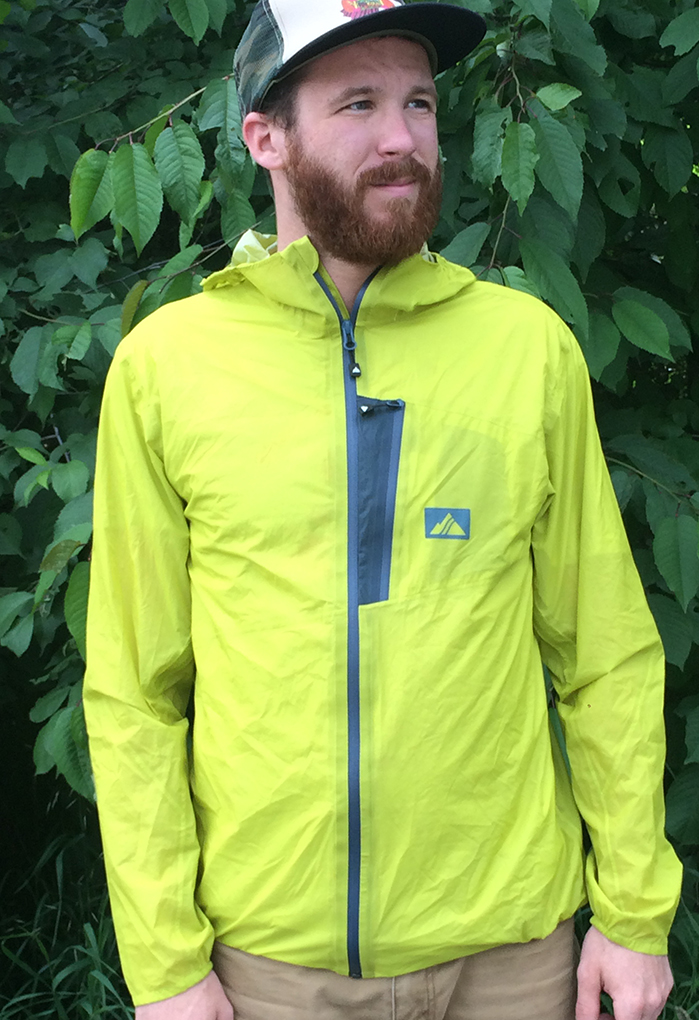
Strafe Scout Jacket
Size: Large
Face Fabric: 2.5-layer stretch eVent
Waterproofing: 20k
Breathability: 15k
Stated Features:
- YKK Vislon Aquagaurd zippers
- Single pull hem adjustment
- Low profile Scuba hood
- Small mesh lines underarm vents
- Once chest pocket
Stated Weight (size Medium): 160 grams
Blister’s Measured Weight: 173 grams
MSRP: $225
Reviewer: 6’, 180 lbs.
Test Locations: Driggs, Salmon, & Moscow, ID; Teton Pass, Darby Canyon, Fox Canyon, Teton Canyon, WY
Test Duration: 20 days
Intro
We’ve reviewed quite a few of Strafe’s winter outerwear pieces, but this spring, I’ve been spending a bunch of time in their new Scout jacket, which Strafe describes as, “The primary item we bring with us for adventures most of the year.”
Strafe also calls the Scout “Our super lightweight and fully waterproof shell that maintains critical breathability for comfort during activity.”
So basically, it’s a raincoat. But it’s a reasonably breathable, very light & packable, stretchy raincoat, and, after a few months of testing, I’d have to agree with Strafe — the Scout has become the outerwear piece that’s most likely to be in my pack for the majority of my trips.
Fit
I’ve now tested pieces from three different apparel lines from Strafe (Cham2, Recon, and now the Scout Jacket), and it has become obvious that Strafe puts a lot of thought into developing use-specific fits — the Cham2 line fits differently from the Recon line, which fits differently from the Scout. However, I’ve found that at 6’, 180 lbs, the size Large pieces from Strafe have worked very well for me, based on their intended uses.

The Scout is the slimmest-fitting piece I’ve been in from Strafe. I can fit a light insulator (think Patagonia Nano Air) underneath it, but I get a bit of a Michelin Man look with a thicker piece than that. I appreciate this, since most of the time I’m using the Scout I don’t need much insulation, and the trim fit means there is less excess fabric, less weight, and less room taken up in a pack.
The Scout feels a little looser than the 7mesh Revelation jacket I reviewed last year, mostly due to the fact that the Scout has some stretch to it. The Scout also fits a little longer, and has a flat waist hem instead of a more bike-oriented cut.
If you’re significantly heftier than me, you may want to size up, but I’ve been very impressed with the Scout’s fit combined with the stretch fabric. Strafe says they’ve tweaked the fit a little bit on the production version, the hem has changed with a little more tail drop, and the sleeves are slightly longer.
Features
True to its stripped-down intentions, the Scout doesn’t have a lot of extra features. The one chest pocket is big enough for a phone and a small wallet, and the pocket has a headphone port that runs into the jacket.
The Scout’s pit vents are located farther away from the armpit and closer to the biceps than most jackets I’ve used, and I was surprised to find that they are mesh lined. While I don’t mind the mesh lining, the jacket would be lighter and the vents would be able to open a little wider without it. The vents do a decent job of dumping heat, but they’re not huge. Strafe says they’ve changed the production jacket so that there is no mesh in the vents, a change that I think is a great idea.
The cuffs have a simple elastic band that has done a good job keeping the cuffs snug at my wrists with no velcro tabs.
The hood is similarly stripped down; there is no drawstring or wire brim, just an elastic scrunchy in the back and a slightly stiffer brim. The hood has what Strafe calls a “Scuba cut” — it’s very slim and fits almost like a wetsuit hood, so it fits best under helmets, although I have been able to pull it over lower profile helmets when necessary. When used without a hat or helmet it works very well; it’s so low profile that it doesn’t catch much wind or affect vision too much.
NEXT: Packability, Performance, Etc.
